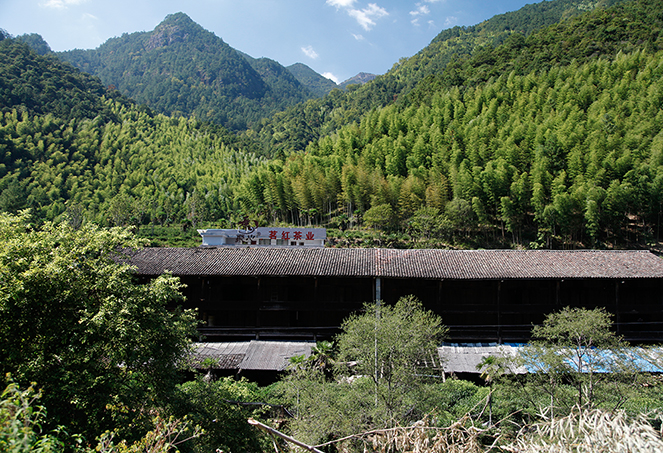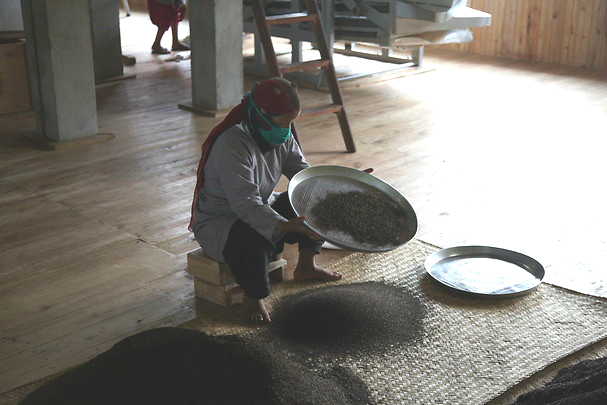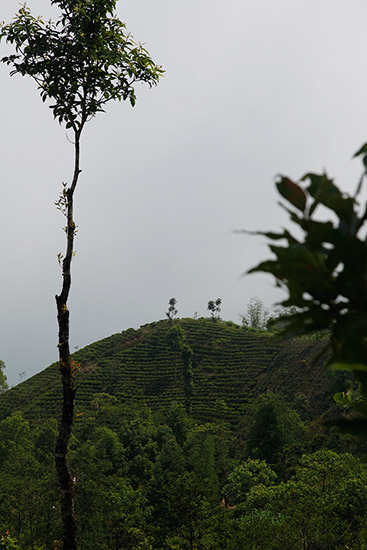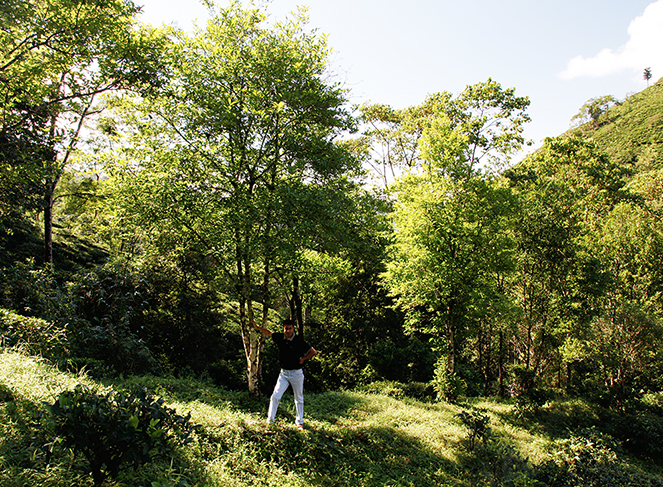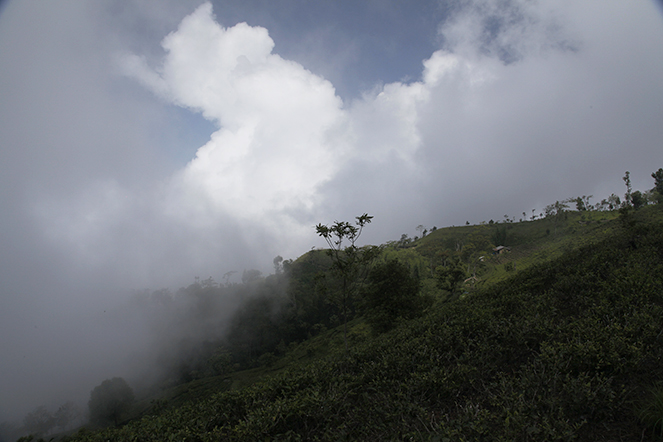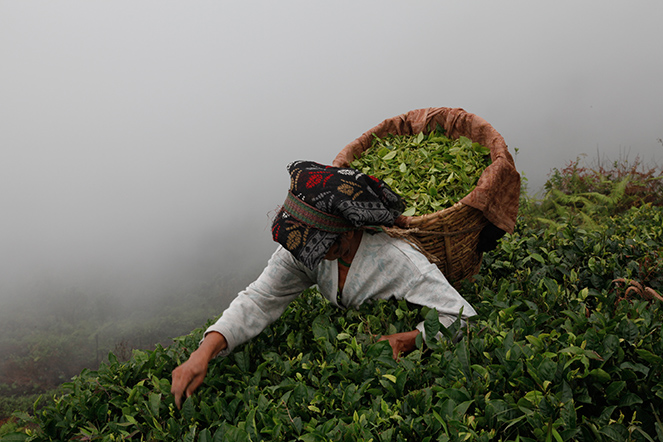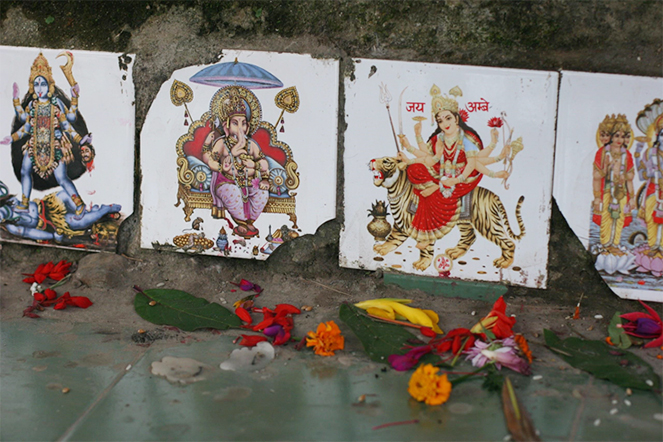In China there is a very famous group of teas called “rock teas”. These semi-oxidised teas come from Wu Yi Shan, a mountain range in the north of Fujian province. The best known is Da Hong Pao. You have to taste it at least once in your life to realise what an exceptional tea this is. It has a rare strength and length in the mouth, yet remains subtle. It is fruity, toasted, woody and sweet at the same time.
From plant to cup
The origins of “lapsang souchong”
Calling all smoked teas connoisseurs! It is here, in a Chinese regional park in the north of Fujian province, that all lapsang souchongs were produced for two hundred years. The origins of this tea date back to the 19th century, when a high-ranking Chinese army officer requisitioned the tea factory that stood here before this one, to house his regiment, leaving the farmer no choice but to dry his tea outside, over burning spruce roots. Which is how smoked tea came about.
Manual skills are still essential in tea production
In most tea-producing countries, the best teas are plucked by hand. This means that growing high quality tea often requires the participation of many men and women. Not only is harvesting the leaves a meticulous task, but sorting them just before they are packed and dispatched is also done by hand. The work demands incredible patience.
After rice, tea is the agricultural resource that employs the greatest number of people around the world.
Nepal is leading the way in new teas
Among the “Grands Crus” I’ve tasted in recent months, among the many teas from every part of Asia, I have to say that the ones that have impressed me most are the teas from Nepal. Of course, I have been sent wonderful Ichibanchas, unique first-flush Darjeelings, exceptional Oolongs from Taiwan, and richly aromatic Long Jings. Nonetheless, what is happening in Nepal is unique. In the past decade, this country has been working hard to produce teas of a very high quality. And unlike what I see in other countries, where there is a tendency to perpetuate a highly respectable tradition, here people are trying to develop new teas, work with different cultivars, experiment with wilting and rolling methods, and so on. And often, with success.
The tea plant that didn’t stop growing
Due to the harvesting of its leaves, a tea plant does not get bigger; instead its trunk thickens. So a tea field looks more like a bonsai forest. But left unchecked, Camellia Sinensis and Camellia Assamica can grow to a height of several metres. Here is Rudra Sharma, the planter at Poobong in India, in front of one of his wild tea plants.
Like a Flying Carpet
The Mist Valley plantation takes its name from the lingering mist that envelops the mountains in this region of Nepal. However, from time to time the wind blows away the fog, the clouds dissipate and the sky clears completely. Then this magical landscape is revealed, with the tea fields that appear to hang in the sky, undulating like flying carpets, ready to carry you off over the Himalayas.
Himalayan mist
I am writing to you from paradise,
From a plantation at the end of the world,
Right at the bottom of a valley in Nepal.
A plantation worth finding after hours of walking,
Hidden in the Himalayan mist,
A plantation that makes its tea from the crops of an association of small producers,
A plantation so isolated that the number of visitors can be counted on one hand,
An unknown plantation whose teas are nonetheless worth the detour.
A plantation named Mist Valley.
Special time spent with tea pluckers
The lunch break offers a special opportunity to sit down with the tea pluckers and get to know them. They don’t often get to see buyers, and are even less likely to have a conversation with them. It doesn’t take long before shyness turns into spontaneity. These are special moments which I enjoy very much.
First visit to Poobong
Vertiginous slopes and lingering mists form the scenery of Darjeeling. Out walking, a tea plucker appears in the thick fog. She climbs amongst the tea plants with astonishing agility. Poobong, a long-abandoned and inaccessible plantation, is gradually coming back to life. I am visiting it for the first time.
The frenzied pace of the spring harvests
My selection of first-flush Darjeelings is over, the Nepalese season is in full flow, and then it’s the turn of the new-season China teas, before the first Japanese Ichibancha are ready. Between 1 March and 10 May every year, I can taste more than 100 teas every day, not counting the ones I infuse several times, when I’m deciding between different batches. The peak of this pleasant activity, which I always look forward to, takes place around the end of April. At this time of year, so many samples pile up every morning in the packages sent by express mail from Nepal, India, China and Japan, that I sometimes don’t know which way to turn.


